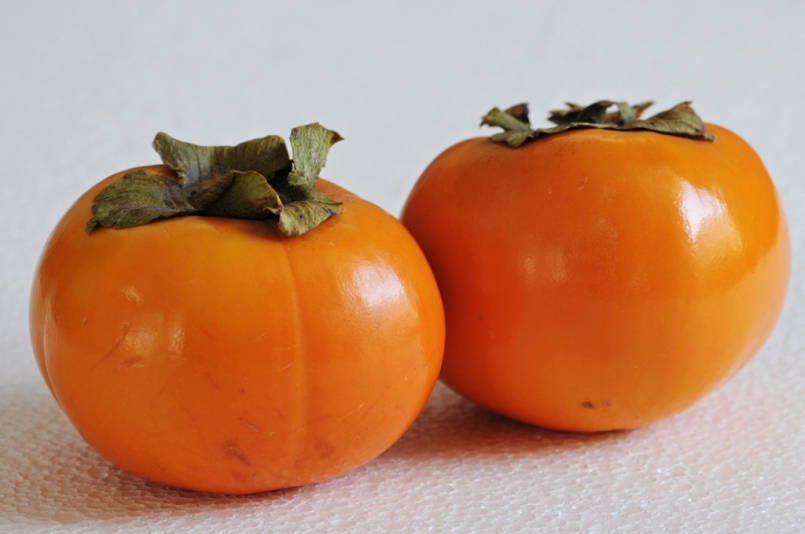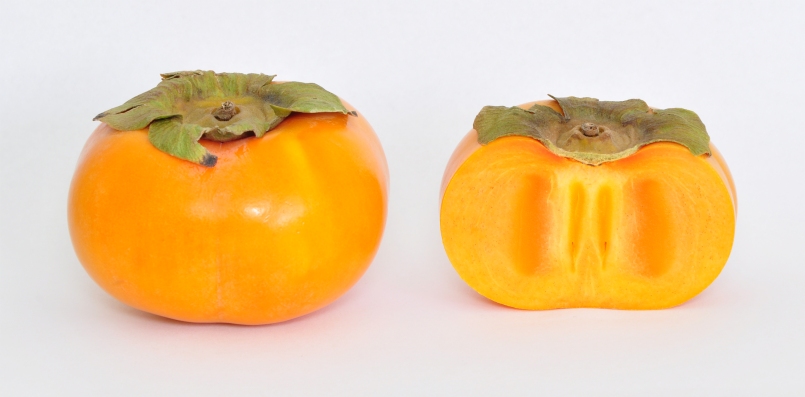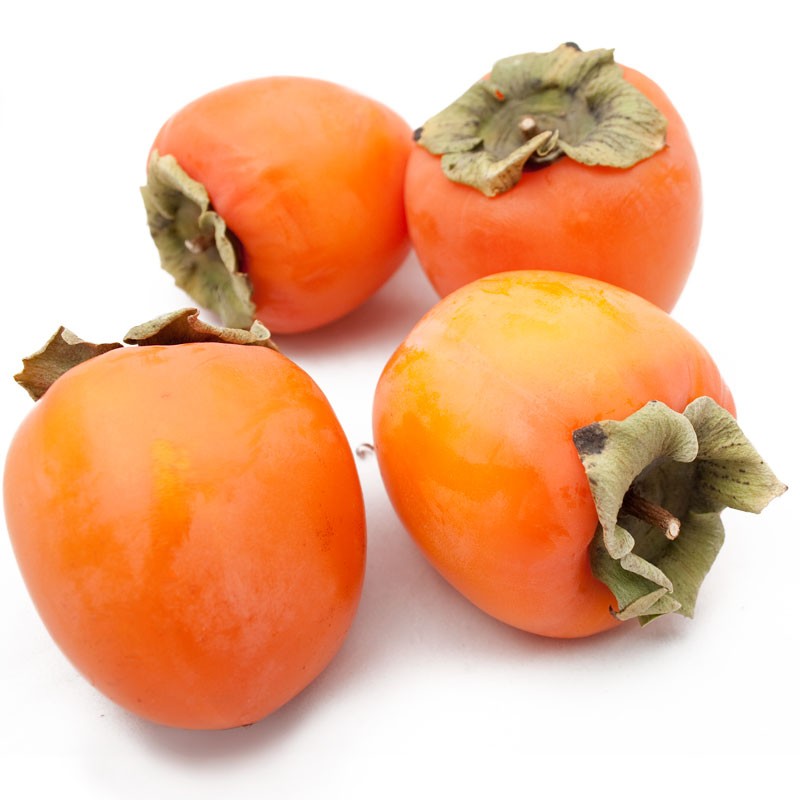When it comes to persimmons, called kaki (柿) in Japanese, there are two main types. One type is the hachiya persimmon: the astringent type that can only be eaten when very soft or all you’ll get is a mouthful of bitterness. The other is called fuyu gaki (富有柿); a shorter, squatter persimmon which can be eaten at any period of ripeness. Fuyu gaki, when ripe, has a rich sweetness that only gets stronger the riper the fruit becomes. The only way to fully understand the flavor is to taste one for yourself. Harvested in the fall, after all the leaves have fallen from the kaki tree, kaki is so important to Japan that it’s been declared Japan’s national fruit.
It’s no surprise that fuyu gaki is nutritious, being a rich source of antioxidants, vitamin A, manganese, and fiber among others. All persimmons contain tannin, which has been potentially linked with cell health and regulating blood flow. Eaten uncooked, the fiber in the fruit also helps with digestive health.
Since fuyu gaki holds its sweet taste for the majority of its ripened life, it’s good to buy anywhere from firm, pre-ripened to soft and sweet. The best way to tell if a fuyu gaki has just ripened is to find one that is firm and completely orange-red in color. They ripen slowly, so it’s okay to buy one a few days before you plan on eating or using it. When buying fuyu gaki make sure you grab the short, squat fruit that looks like a miniature pumpkin; if you mix fuyu gaki with the more cone shaped hachiya gaki, you may bite into a very bitter mouthful.
Unlike the hachiya version, which can only be enjoyed when completely soft, fuyu gaki can be enjoyed in a variety of ways. When fuyu gaki is firm they can be cut into slices and eaten as a snack with crackers, diced and put into salad, or eaten straight like you would an apple, just peel the skin and cut it into pieces for a tasty and healthy snack. Softer fuyu gaki can be enjoyed straight with a spoon or added to flavor breads, cakes, cookies, or even drinks. Fuyu gaki also taste great when made into a jam or jelly. Fuyu gaki that you buy in stores generally don’t have seeds, but you may want to check after cutting them, just to be sure. The seeds are small and flat, similar to pumpkin seeds. Even kaki’s seeds are popular enough to have a salty snack, kaki no tane (柿の種) named after them.
Hachiya persimmons are known as shibugaki (渋柿); the name comes from the word shibui (渋い), a word that describes the unique astringent flavor that hachiya persimmons maintain until they become completely ripe. While generally hachiya persimmons remain inedible until they’re ripened to a soft, almost saucy texture, there’s a trick to break down the enzymes in the fruit which cause the cheek puckering, mouth drying taste of a pre-ripe hachiya persimmon. If you want to speed up a hachiya persimmon’s ripening process, simply submerge the fruit in either shochu (焼酎) or watered-down vodka for about a day. Another trick is to freeze them overnight; the ice is also supposed to be able to break down the bitter tasting enzyme. After doing either of these, your hachiya persimmons should be ready to eat!
With persimmon season upon us, we’ve just begun receiving our fresh fuyu gaki. Our kaki come in late October and only stay around until December, so make sure to come get your kaki while they’re still around; come buy yours and see how many ways you can eat them!
Are there any topics that you’d like to see us cover? Leave a comment below and let us know! Your topic could be the next one we cover!




Türkey
Nasıl kurutup saklayabiliriz bu meyveyi…?
Saygılar
Şevki Yılmaz
Yüceler mahallesi
Ünye /Ordu/Türkiye